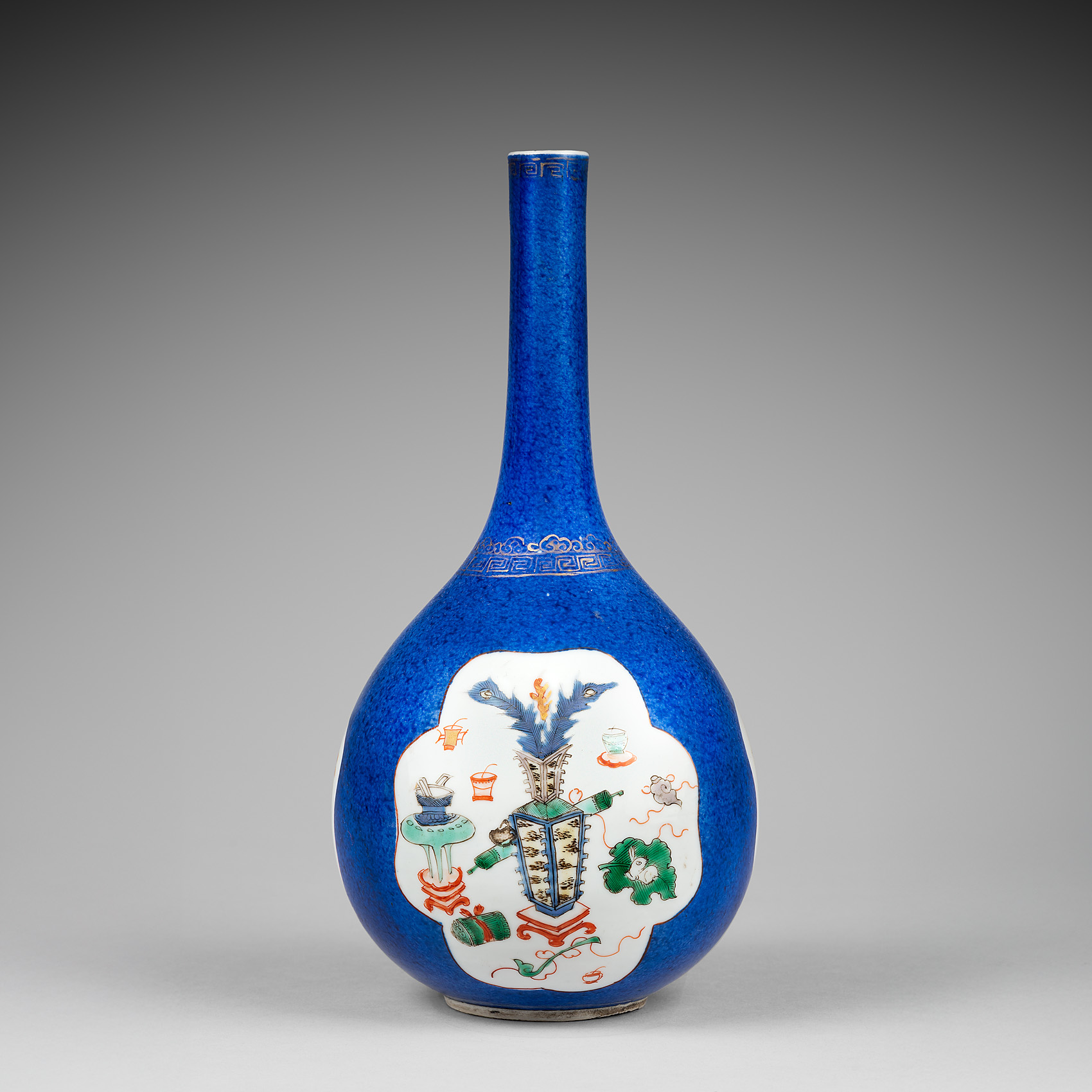This bottle vase has a globular body and a long and slender cylindrical neck. It is painted in underglaze powder blue and overglaze famille verte enamels with gold. Around the body, the bottle has three multilobed panels reserved in white and outlined in iron-red.
Each of the three cartouches is decorated with a different design. The first panel shows motifs from the Hundred Antiques: the vase with peacock feathers and a coral branch (meaning “may you achieve the highest official rank”), the scholar’s scroll, the artemisia leaf, the books, the incense burner, the ruyi and the brush
Two other cartouches each depict prunus blossoms, which symbolise resilience and renewal, and chrysanthemum, symbolizing longevity.
